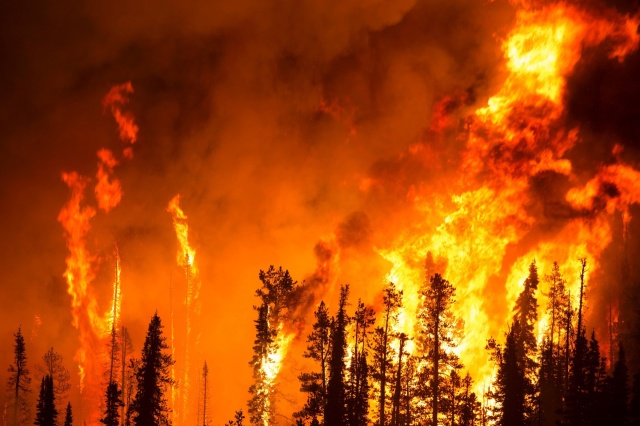Wildfires occur when all the necessary elements of a fire come together in a susceptible area. An ignition source is brought into contact with a combustible material (such as vegetation). This material must then be subjected to enough heat and have an adequate supply of oxygen from the ambient air. A high moisture content usually prevents ignition and slows propagation because higher temperatures are needed to evaporate any water in the material and heat the material to its fire point. Dense forests usually provide more shade and humidity, resulting in less wildfires.
A wildfire front is the portion sustaining continuous flaming combustion, where unburned material meets active flames, or the smoldering transition between unburned and burned material. Even before the flames of a wildfire arrive at a particular location, heat transfer from the wildfire front warms the air to 800 °C , which pre-heats and dries flammable materials, causing materials to ignite faster and allows the fire to spread faster. High-temperature and long-duration surface wildfires may encourage flashover or torching: the drying of tree canopies and their subsequent ignition from below.
Heat waves, droughts, climate variability such as El Niño, and regional weather patterns such as high-pressure ridges can increase the risk and alter the behavior of wildfires dramatically. Years of precipitation followed by warm periods can encourage more widespread fires and longer fire seasons. Since the mid-1980s, earlier snowmelt and associated warming has also been associated with an increase in length and severity of the wildfire season, or the most fire-prone time of the year, in the Western United States. Global warming may increase the intensity and frequency of droughts in many areas, creating more intense and frequent wildfires. A 2015 study indicates that the increase in fire risk in California may be attributable to human-induced climate change.

